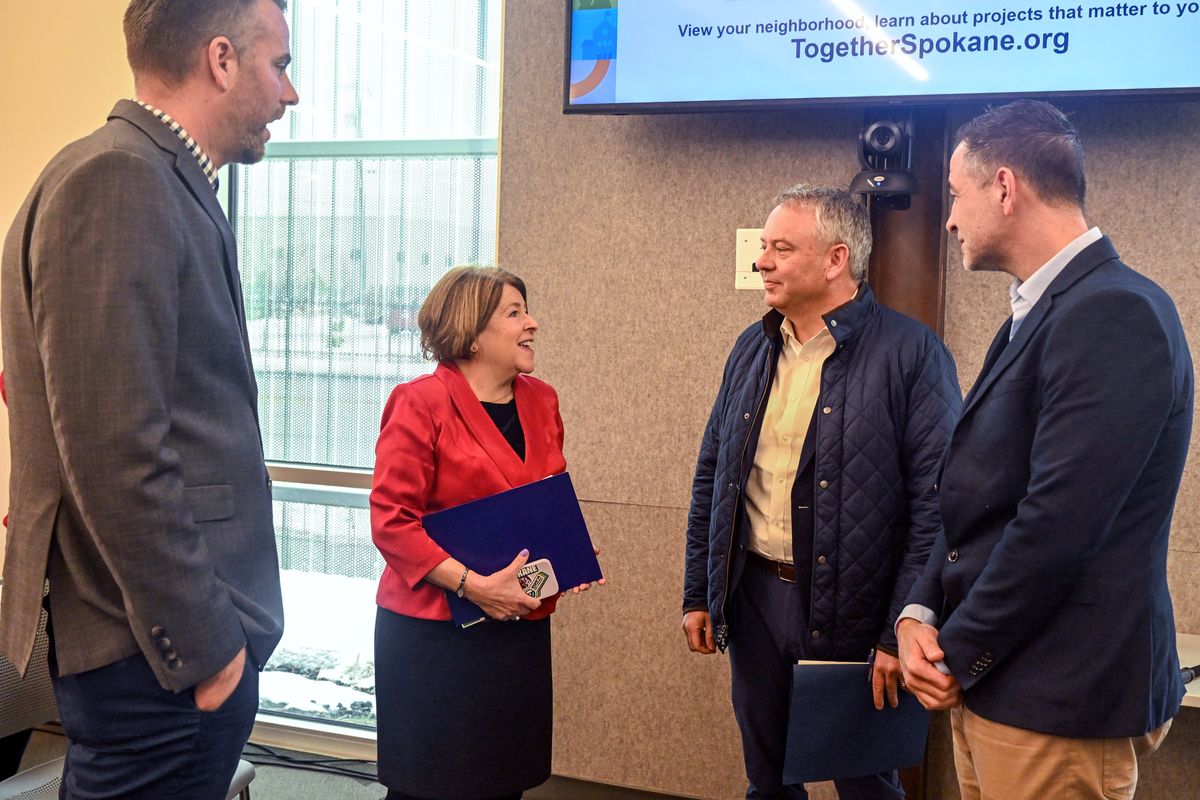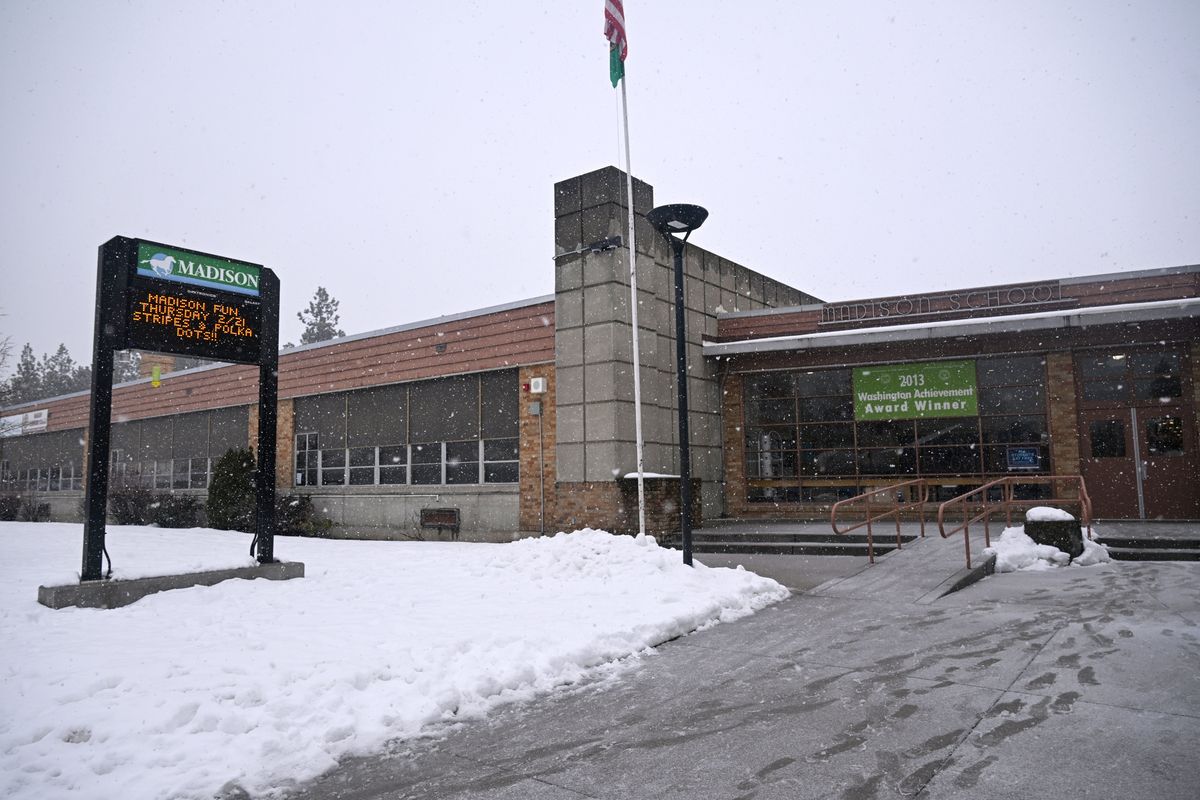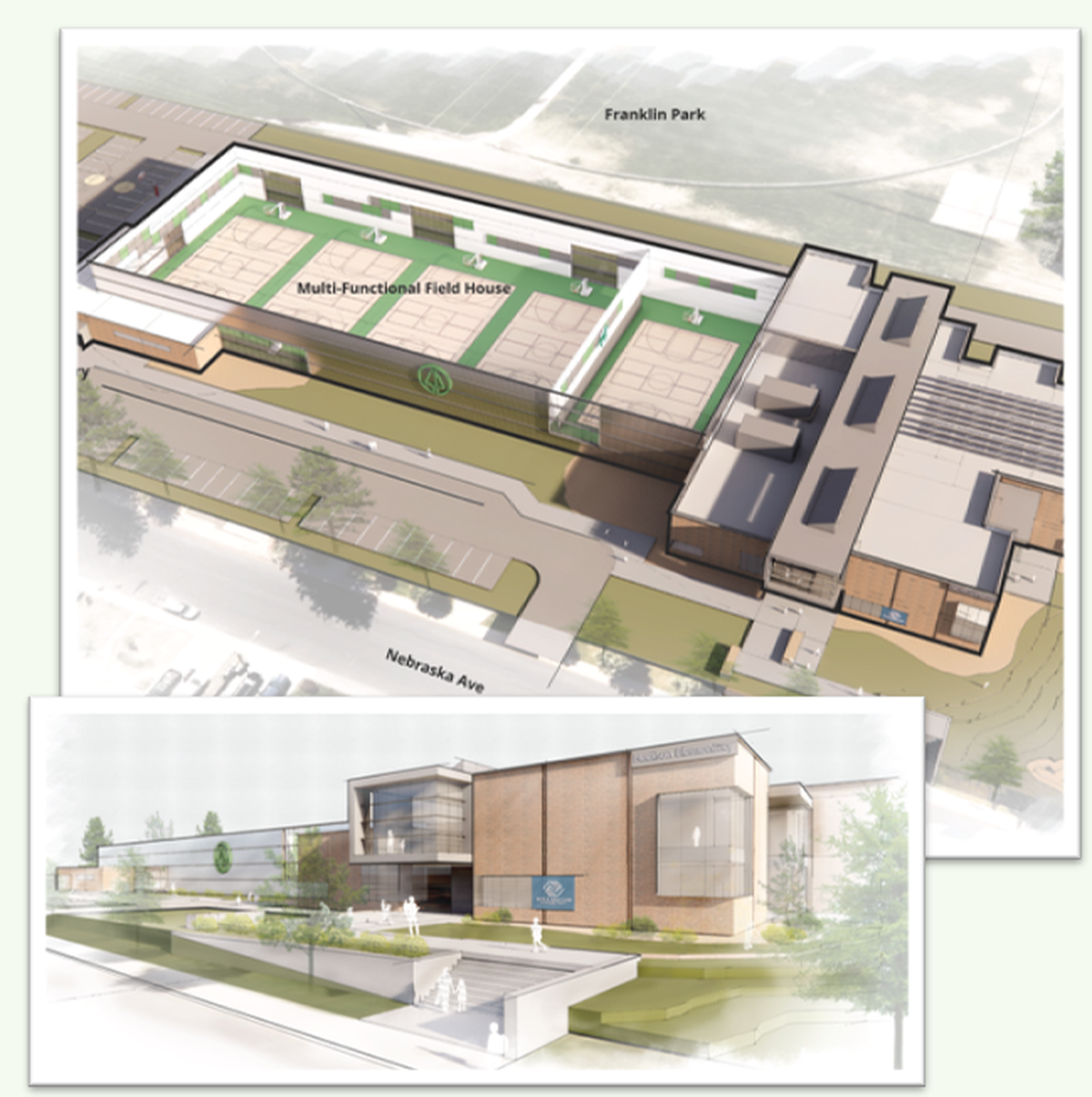‘A rising tide lifts all boats’: How schools, parks rallied support from outside organizations to chip in to future $440M tax ask
Madison School, one of Spokane’s older school buildings, could get some upgrades through a partnership between the Spokane Schools and the city parks department. (Jesse Tinsley/THE SPOKESMAN-REVI)
While Spokane Public Schools and Spokane Parks and Recreation are proposing two lofty tax proposals generating a combined $440 million from Spokane property owners with the promise of more than 200 projects in each corner of the city, there are outsiders willing to chip in, too.
Spokane schools and parks have proposed separate ballot items with a some projects that they’ll each chip in for and then share the space.
Included in the proposal are about 10 outside organizations pitching in a combined $11 million for turf and tennis, for example. In some cases, they build off existing relationships between the government agencies and nonprofits, as is the case with the agreement between Spokane Youth Sports Association.
“A rising tide lifts all boats,” said Ben Walker, association executive director.
The nonprofit, nearly 60 years old, has an existing partnership with each entity: renting gym and park space in the past. Walker said linking arms in this proposal takes their relationship a step further, to “serve more kids” by making sports easier to access.
The association plans to chip in up to $5 million to the package for the construction of a multisport complex at Ferris High School. SYSA has long been looking to build such a complex, embroiled in a long legal battle over its intent to develop fields in the Glenrose neighborhood, about a mile and a half from Ferris. There’s a lack of play space in the southern part of the city, Walker said.
“We have lobbied and worked hard to try to respond to that need as a nonprofit, trying to purchase and develop our own space up there,” Walker said. “That’s been a challenge in some ways, which we understand, and there’s an opportunity now to jump into a venture like this where we suddenly have access to 10 more fields instead of what we would have been able to provide on our own somewhere.”
Walker said the association had no intention of “abandoning” the project, noting that the lawsuit from the Glenrose association is still ongoing.
“We’ve not abandoned Glenrose at this time, and we’re looking at all opportunities to expand services for kids to play and be active,” Walker said.
The proposed Ferris plans include the addition of three rectangular turf fields for football, soccer and lacrosse, for example, with lighting to allow after-hours play and a turf baseball field.
School sports, Spokane Youth Sports Association and the community could all use the space under terms to be outlined as partners hammer out their agreement. School Superintendent Adam Swinyard said school teams would get priority for their practices.
Two of the most expensive projects in the proposal are the complete reconstruction of Madison and Adams elementary schools. These schools would become more “community centers,” Swinyard said, than traditional elementary schools. Madison would have a separate fieldhouse with courts paid for by Pacific Northwest Qualifier volleyball tournament in exchange for free use during their competitions, with the Spokane Hoopfest Association chipping in another $1 million for this project.
In both schools would be a built-in Boys and Girls Club center to offer after -school child care at the school rather than in a separate building. The Boys and Girls Club has a similar agreement with Mead and West Valley school districts, running clubs out of Ness Elementary and the former Northwood Middle School with an on-site staff member working during school.
“Not only being at the schools so kids have somewhere to go after school, this also gives Boys and Girls a closer reach being on site at those schools instead of a site they bus to or walk to,” Boys and Girls Club CEO Wendy Drum said.
The organization has committed the proceeds of a building on Providence Avenue they intend to sell, Drum said. It was an old Catholic school where the organization first settled 25 years ago.
The Pacific Northwest arm of the United States Tennis Association, which hosts the U.S. Open, reached out to the school district wanting a piece of the action. The 120-year old nonprofit seeks to proliferate tennis around the nation.
Tennis players, Swinyard said, are “at war” with fellow racketsport pickleball, Washington’s official state sport that’s increasing in popularity. A decrease in tennis popularity means less sponsorships for the U.S. Open, where the association generates its revenue, Swinyard said.
“The popularity of tennis is going down, and so is their revenue,” Swinyard said. “So they have an initiative where they are going out throughout the country, looking to promote tennis and try to build back tennis.”
The tennis association intends to pitch in an estimated $1.5 million for a structure around Shadle Park High School’s tennis courts as well as a resurface. They’ll pay to operate the indoor courts, which will also be available for public play through the parks department. The association goes on to offer tennis programming for school kids and lessons for physical education teachers to include tennis curriculum.
Each tax initiative is slated to be on ballots in November, pending each agencies’ board approval. After that, schools and parks will iron out more of the details in their plans, including timelines, potential state match, and terms of use with outside partners.
School officials are proposing a $200 million bond, for which taxpayers can expect to pay roughly 6 to 31 cents per $1,000 of assessed property value depending on the year, with an average payment of 23 cents per $1,000, according to Cindy Coleman, chief finance and business services officer for Spokane Public Schools. Debt repayments expiring over the years means a property owner’s rate would increase by 2 cents in the first year of collection should 60% of voters agree to the initiative.
The city parks levy would raise $240 million in property taxes over the next 20 years from city taxpayers, at a rate of 27 cents per $1,000 of assessed value. Levies require a simple majority to pass.








